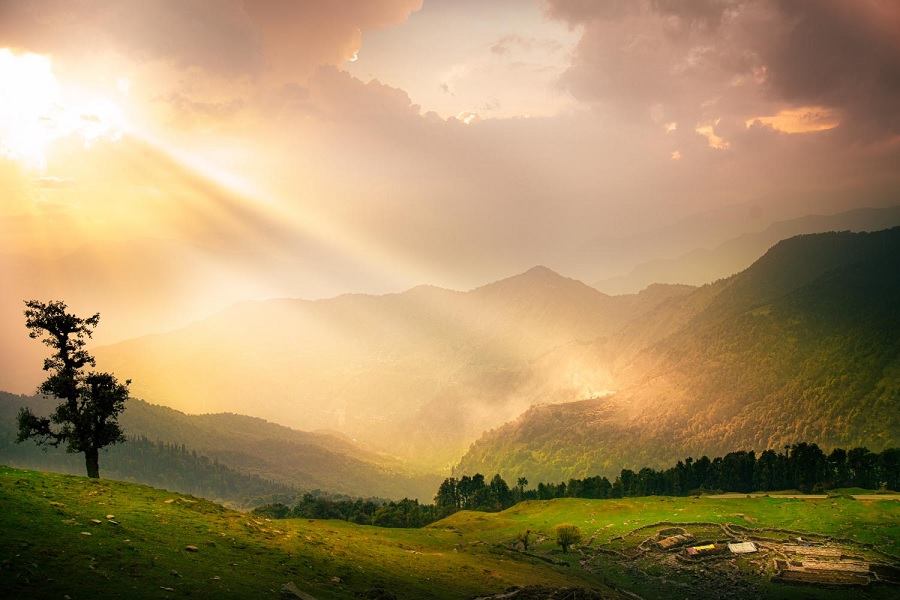Nature has always held a special place in the hearts of humans, offering solace, inspiration, and a profound connection to the Earth. Whether it’s the towering mountains, vast oceans, lush forests, or the mesmerizing desert landscapes, nature’s wonders are a testament to the beauty and power of the natural world. In this article, we will take a real journey through the various aspects of nature, exploring its beauty, significance, and how it shapes our lives.
Table of Contents
The Incredible Diversity of Nature: Nature Real Ytr
The Magic of Mountains
Mountains, with their grand and majestic presence, are one of nature’s most awe-inspiring creations. These towering giants are not just geological formations; they are symbols of strength and endurance. From the Himalayas to the Andes, mountains have captivated adventurers and travelers for centuries. The ecosystems within mountains are incredibly diverse, hosting unique species of flora and fauna that have adapted to harsh and varying climates.
Mountains and Human Connection
Throughout history, mountains have been considered sacred by various cultures. Mount Everest, the tallest mountain in the world, draws mountaineers from around the globe, while Mount Fuji in Japan is revered as a spiritual symbol. Beyond their cultural significance, mountains also play a crucial role in regulating climate and water cycles, making them essential to the environment.
Oceans: The Lifeblood of the Planet
Oceans cover more than 70% of the Earth’s surface and are home to a vast array of marine life. These bodies of water are not just a source of beauty but are also essential for the survival of all life on Earth. Oceans regulate the Earth’s climate by absorbing carbon dioxide, produce the oxygen we breathe, and serve as an important source of food for millions of people around the world.
The Beauty Beneath the Waves
The underwater world of oceans is as fascinating as it is mysterious. Coral reefs, often referred to as the “rainforests of the sea,” are among the most diverse ecosystems on the planet. These vibrant ecosystems support a vast number of species, from colorful fish to majestic sea turtles. Unfortunately, human activities like pollution and overfishing are threatening these vital marine environments, underscoring the importance of ocean conservation.
Forests: The Lungs of the Earth
Forests are often called the “lungs of the Earth” because of their critical role in absorbing carbon dioxide and producing oxygen. Forests also house over 80% of the terrestrial biodiversity, making them one of the most important ecosystems on Earth. From the towering redwoods in California to the dense rainforests of the Amazon, forests are key to maintaining ecological balance.
The Richness of Biodiversity in Forests
The diversity of life in forests is staggering. Every tree, plant, and animal plays a vital role in maintaining the balance of the ecosystem. Tropical rainforests are home to thousands of plant species, many of which have medicinal properties, making these forests valuable not just for wildlife but also for human health. Deforestation, however, poses a significant threat to these ecosystems, leading to loss of biodiversity and contributing to climate change.
The Role of Nature in Human Life
Nature’s Healing Powers
One of the most profound effects of nature is its ability to heal. Research has shown that spending time in nature can reduce stress, improve mental health, and even speed up the healing process. Nature therapy, or ecotherapy, is gaining recognition as an effective treatment for anxiety and depression. Simply being in natural environments can provide a sense of peace and rejuvenation that is hard to replicate in urban settings.
The Concept of Biophilia
Biophilia refers to the innate connection humans feel with the natural world. This concept suggests that humans have an inherent desire to connect with nature and other forms of life. Whether it’s tending to a garden, hiking through a forest, or simply watching the sunrise, engaging with nature brings about a sense of fulfillment and purpose. It’s no wonder that in today’s fast-paced world, more people are seeking refuge in natural spaces.
The Spiritual Significance of Nature
Nature has been a source of inspiration for spirituality across cultures and religions. Many indigenous cultures view nature as sacred, believing that every tree, river, and mountain possesses a spirit. Nature is often seen as a bridge to the divine, offering a way for individuals to connect with something greater than themselves. This deep reverence for nature is reflected in rituals, art, and traditions that honor the Earth and its creations.
Nature in Art and Literature
Throughout history, nature has been a prominent theme in art and literature. From the poetic works of Wordsworth and Thoreau to the intricate landscape paintings of the Romantic era, nature has always been celebrated for its beauty and transformative power. Artists and writers often turn to nature as a source of inspiration, using it to convey emotions, tell stories, and explore the human condition.
The Importance of Nature Conservation
The Threats to Nature’s Beauty
While nature’s beauty is undeniable, it is also fragile. Human activities, such as deforestation, pollution, and climate change, are putting immense pressure on natural ecosystems. Deforestation is leading to habitat loss for countless species, while rising global temperatures are disrupting weather patterns and ecosystems. The impact of plastic pollution on oceans is devastating, with marine life being severely affected by waste.
The Role of Conservation Efforts
Conservation efforts are critical to preserving nature’s beauty and biodiversity. Initiatives such as reforestation, wildlife protection, and sustainable agriculture are helping to restore and protect ecosystems. National parks and protected areas provide safe havens for wildlife and offer opportunities for people to experience nature without causing harm. Conservation organizations are also working to raise awareness about the importance of protecting natural resources for future generations.
Sustainable Living: A Key to Preserving Nature
Sustainable living involves making choices that reduce our impact on the environment. This includes reducing waste, conserving water, using renewable energy, and supporting eco-friendly products. By adopting sustainable practices, individuals can contribute to the preservation of nature. Simple actions, such as reducing plastic use, conserving energy, and supporting conservation efforts, can go a long way in protecting the environment.
How Individuals Can Make a Difference
Everyone has a role to play in protecting nature. Whether it’s through small daily actions like recycling or larger initiatives like participating in tree-planting programs, individuals can have a positive impact on the environment. Supporting environmental organizations, volunteering for conservation projects, and advocating for policy changes that protect the environment are all ways to make a difference.
Nature’s Role in Shaping Our Future
The Impact of Climate Change on Nature
Climate change is one of the biggest threats to the natural world. Rising temperatures, melting glaciers, and changing weather patterns are having a profound impact on ecosystems across the globe. Many species are struggling to adapt to these changes, and some are at risk of extinction. Addressing climate change is not just about protecting the environment; it’s about ensuring the survival of life on Earth.
The Need for Global Action
Addressing climate change and protecting nature requires global cooperation. Governments, organizations, and individuals must work together to reduce greenhouse gas emissions, protect wildlife, and restore damaged ecosystems. The Paris Agreement is one example of a global effort to combat climate change, but more needs to be done to meet environmental goals and protect the planet for future generations.
The Future of Nature Conservation
As awareness of environmental issues grows, so too does the movement to protect nature. Advances in technology, such as satellite monitoring and artificial intelligence, are helping conservationists track wildlife and monitor ecosystems more effectively. Education is also playing a key role, with younger generations becoming more involved in environmental advocacy. The future of nature conservation lies in the hands of people who are willing to take action to protect the Earth.
Conclusion
Nature is more than just a backdrop to our lives; it is a vital part of who we are. From the towering mountains to the deep oceans, nature’s beauty inspires, heals, and connects us to the world around us. However, as human activities continue to threaten the environment, it is crucial that we take steps to protect and preserve the natural world. By embracing sustainable practices, supporting conservation efforts, and recognizing the spiritual and physical benefits of nature, we can ensure that future generations will continue to experience the wonders of the Earth.
4o
You’ve hit the Free plan limit for GPT-4o.
Responses will use another model until your limit resets after 1:21 PM.
Get Plus


